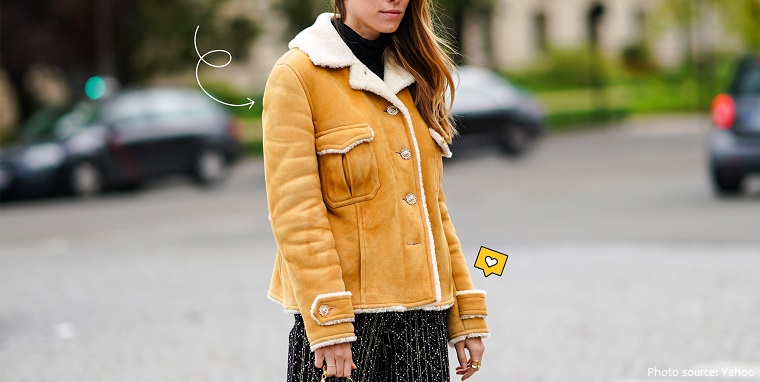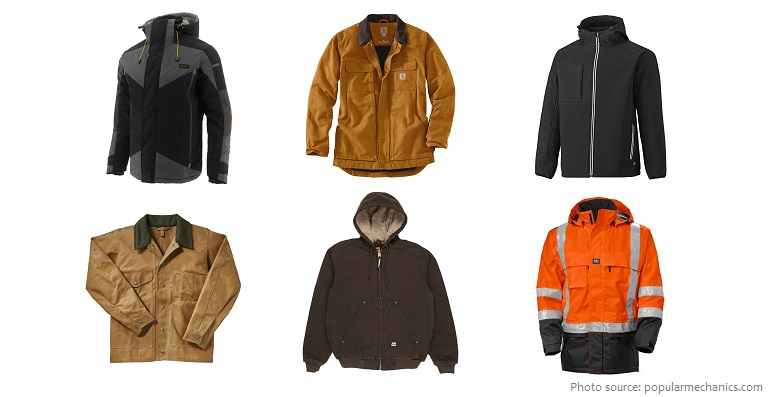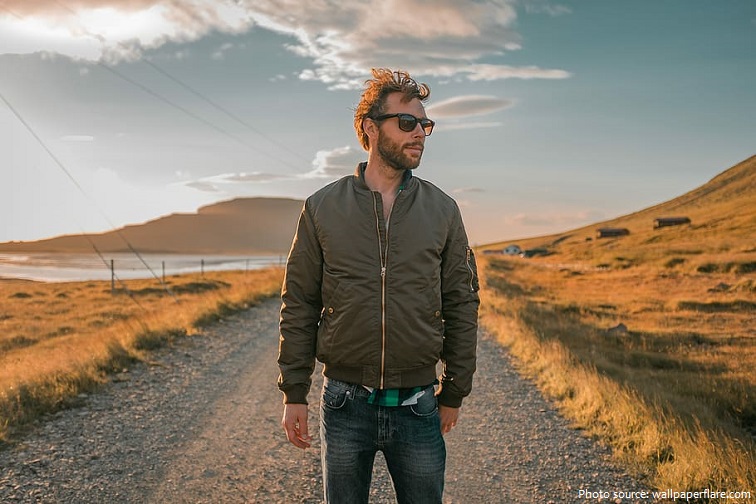
A jacket is a garment for the upper body, usually extending below the hips. It typically has sleeves, and fastens in the front or slightly on the side.
A jacket is generally lighter, tighter-fitting, and less insulating than a coat, which is outerwear.
Some jackets are fashionable, while others serve as protective clothing.
Jackets without sleeves are vests.
The word “jacket” comes from the French word jaquette. The term comes from the Middle French noun jaquet, which refers to a small or lightweight tunic. In Modern French, jaquette is synonymous with jacket. Speakers of American English sometimes informally use the words jacket and coat interchangeably

The jacket seems to have originated during the Middle Ages or early Renaissance as the jerkin, a more fitted version of the older short tunic worn by working-class men. By the early 18th century, the jacket became standard working dress for those employed both in agriculture as well as by servants in urban settings.
From the late 1830s, fitted single-breasted lounge jackets (as opposed to more loosely cut jackets of the previous century), with darts beneath the arms, small revers, and waisted pockets became popular with middle-class men, with a double-breasted version appearing about 1862 (which would later become known as the reefer jacket). At that time the single-breasted Norfolk jacket, which buttoned high to the neck, became very fashionable, particularly for country sporting activities.

But by the end of the 19th century, only three-buttoned styles were deemed fashionable, with the lounge jacket remaining the most popular. One version, made with silk-fronted lapels, was often worn to dinner parties and would become known simply as a dinner jacket (part of the formal suit known as a “tuxedo”).
Similar styles to those worn in the 19th century were worn for most of the 20th century and into the present century as well. Sports jackets are still worn with flannels, the Norfolk remains a sporting favorite, and blazers with brass buttons are popular summer attire when worn with white pants. The upper garment of a man’s suit is known as a jacket, and “dinner jacket” remains an alternative term for the ensemble known as “black tie.”
A flight jacket is a casual jacket that was originally created for pilots and eventually became part of popular culture and apparel. Leslie Irvin first designed and manufactured the classic sheepskin flying jacket. In 1926 he set up a manufacturing company in the United Kingdom, and became the main supplier of flying jackets to the Royal Air Force during most of World War II. It has evolved into various styles and silhouettes, including the “letterman” jacket and the fashionable “bomber” jacket that is known today.

A leather jacket is a jacket-length coat that is usually worn on top of other apparel or item of clothing, and made from the tanned hide of various animals. In the latter half of the 20th century, the leather jacket—in many forms—achieved iconic status and general acceptance through an inextricable link to Hollywood. Such jackets were popularized by numerous stars in the 1940s and 1950s, including actor Jimmy Stewart in the film Night Passage (1957), who had actually commanded a US bomber squadron during World War II.
A windbreaker is a thin fabric jacket designed to resist wind chill and light rain, making it a lighter version of the jacket. It is usually of lightweight construction and characteristically made of a synthetic material. A windbreaker often uses elastic waistbands, and/or armbands, and a zipper to allow adjustments for the current weather conditions.

The Eisenhower jacket or “Ike” jacket, officially known as the Jacket, Field, Wool, Olive Drab, is a type of waist-length jacket or blouson developed for the U.S. Army during the later stages of World War II and named after Dwight D. Eisenhower. Intended to be worn on its own or as an insulating layer beneath the M-1943 Field Jacket and over the standard wool flannel shirt and wool sweater, it featured a pleated back, adjustable waist band, fly-front buttons, bellows chest pockets, slash side pockets, and shoulder straps.
The most valuable jacket sold at auction was the black and red calf leather jacket with winged shoulders worn by singer Michael Jackson (USA) in his renowned 1983 Thriller video, which was sold to Milton Verret of Austin, Texas, USA, for £1.1m ($1.8m) at a sale organised by Julien’s Auction in Beverly Hills, California, USA, on 26 June 2011.
The largest jacket measures 12.95 m (42 ft 6 in) from collar to bottom, 15.32 m (50 ft 3 in) across from sleeve to sleeve and was created by St. George’s C of E Church (UK) in Stockport, UK, on 29 June 2011.